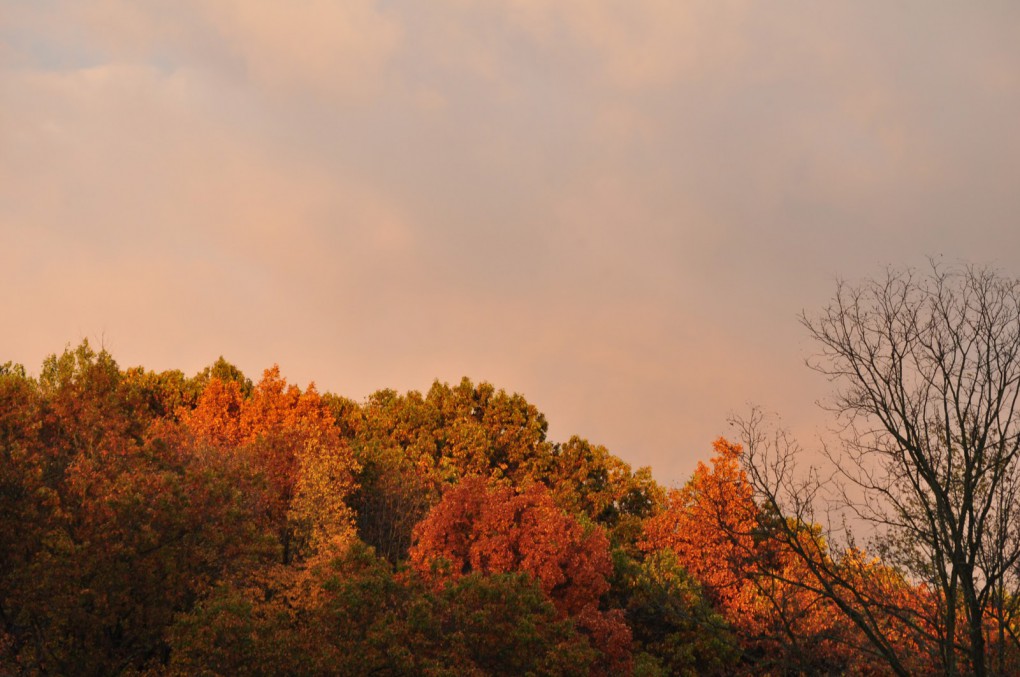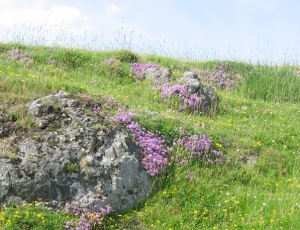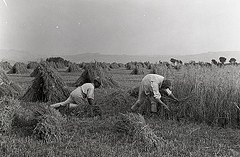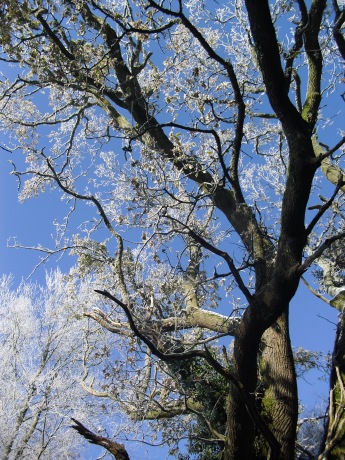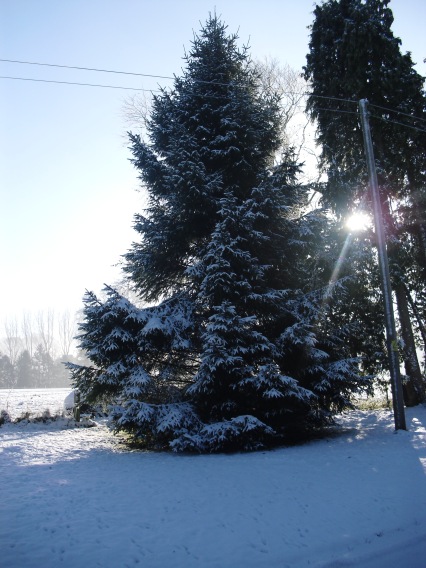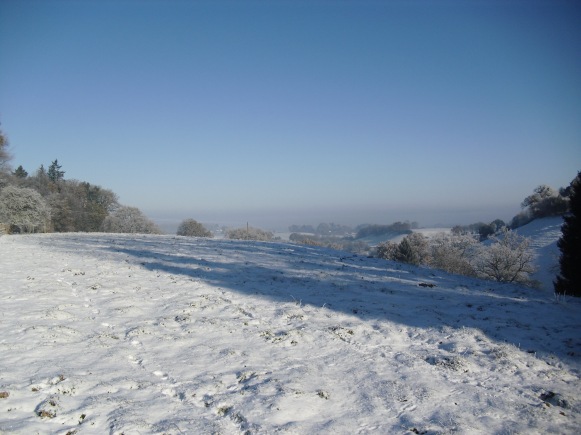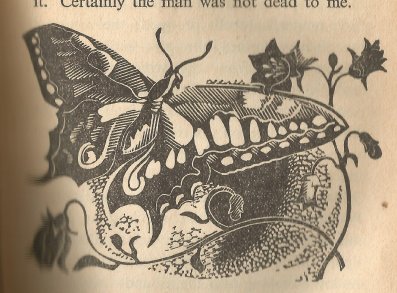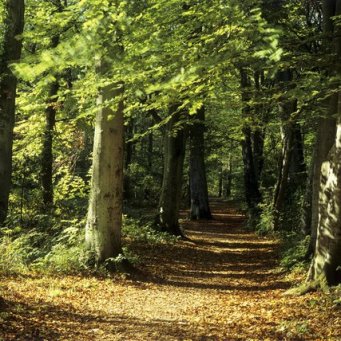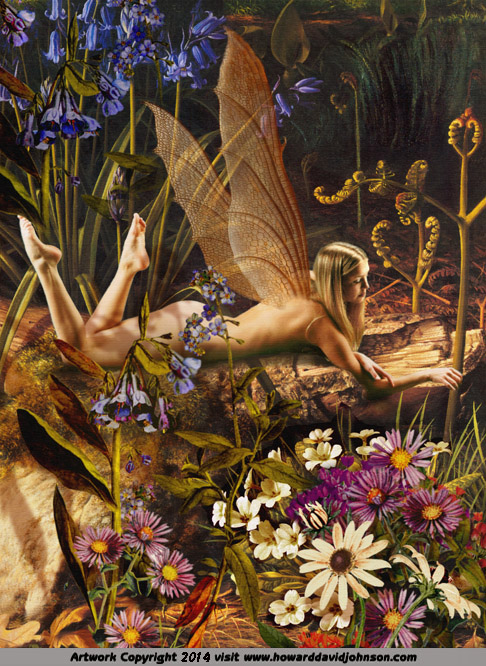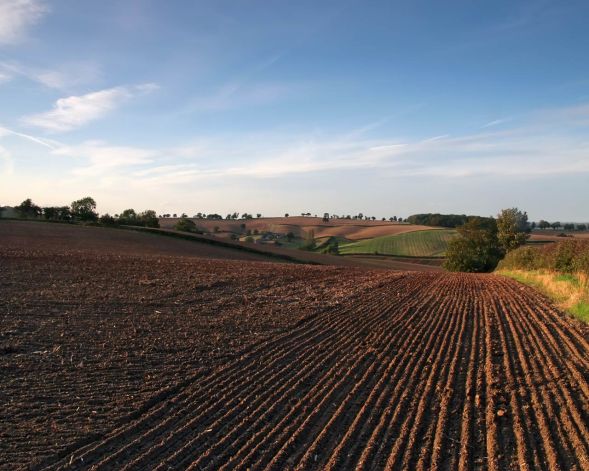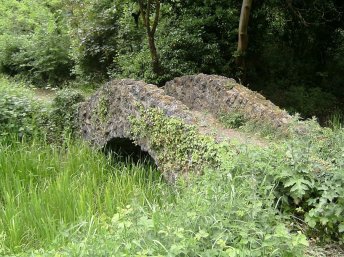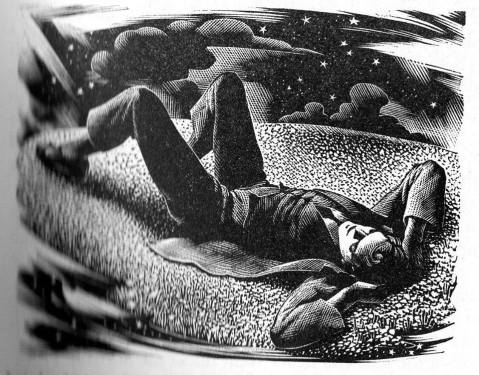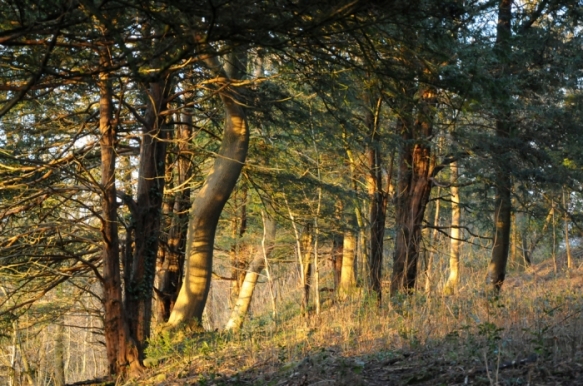 Source: woodlands.co.uk
Source: woodlands.co.uk
The lost leaves measure our years; they are gone as the days are gone, and the bare branches silently speak of a new year, slowly advancing to its buds, its foliage, and fruit. Deciduous trees associate with human life as this yew never can. Clothed in its yellowish-green needles, its tarnished green, it knows no hope or sorrow; it is indifferent to winter, and does not look forward to summer. With their annual loss of leaves, and renewal, oak and elm and ash and beech seem to stand by us and to share our thoughts. There is no wind at the edge of the wood, and the few flakes of snow that fall from the overcast sky flutter as they drop, now one side higher and then the other, as the leaves did in the still hours of autumn. The delicacy of the outer boughs of the great trees visible against the dark background of cloud is as beautiful in its own way as the massed foliage of summer. Each slender bough is drawn out to a line; line follows line as shade grows under the pencil, but each of these lines is separate. Great boles of beech, heavy timber at the foot, thus end at their summits in the lightest and most elegant pencilling. Where the birches are tall, sometimes the number and closeness of these bare sprays causes a thickening almost as if there were leaves there. The leaves, in fact, when they come, conceal the finish of the trees; they give colour, but they hide the beautiful structure under them. Each tree at a distance is recognisable by its particular lines; the ash, for instance, grows with its own marked curve.
Some flakes of snow have remained on this bough of spruce, pure white on dull green. Sparingly dispersed, the snow can be seen falling far ahead between the trunks; indeed, the white dots appear to increase the distance the eye can penetrate; it sees farther because there is something to catch the glance. Nothing seems left for food in the woods for bird or animal. Some ivy berries and black privet berries remain, a few haws may be found; for the rest, it is gone; the squirrels have had the nuts, the acorns were taken by the jays, rooks, and pheasants. Bushels of acorns, too, were collected by hand as food for the fallow deer in the park. A great fieldfare rises, like a lesser pigeon; fieldfares often haunt the verge of woods, while the redwing thrushes go out into the meadows. It can scarcely be doubted that both these birds come over to escape the keener cold of the winters in Norway, or that the same cause drives the blackbirds hither. In spring we listen to Norwegian songs—the blackbird and the thrush that please us so much, if not themselves of Scandinavian birth, have had a Scandinavian origin. Any one walking about woods like these in January can understand how, where there are large flocks of birds, they must find the pressure of numbers through the insufficiency of food. They go then to seek a warmer climate and more to eat; more particularly probably for sustenance.
The original and simple theory that the majority of birds migrate for food or warmth is not overthrown by modern observations. That appears to be the primary impulse, though others may be traced or reasonably imagined. To suppose, as has been put forward, that birds are endowed with a migratory instinct for the express purpose of keeping down their numbers, in order, that is, that they may perish in crossing the sea, is really too absurd for serious consideration. If that were the end in view, it would be most easily obtained by keeping them at home, where snow would speedily starve them. On the contrary, it will appear to any one who walks about woods and fields that migration is essential to the preservation of these creatures. By migration, in fact, the species is kept in existence, and room is found for life. Apart from the necessity of food, movement and change is one of the most powerful agencies in renewing health. This we see in our own experience; the condition of the air is especially important, and it is well within reasonable supposition that some birds and animals may wish to avoid certain states of atmosphere. There is, too, the question of moulting and change of plumage, and the possibility that this physiological event may influence the removal to a different climate. Birds migrate principally for food and warmth; secondly, on account of the pressure of numbers (for in good seasons they increase very fast); thirdly, for the sake of health; fourthly, for sexual reasons; fifthly, from the operation of a kind of prehistoric memory; sixthly, from choice. One or other of these causes will explain almost every case of migration.
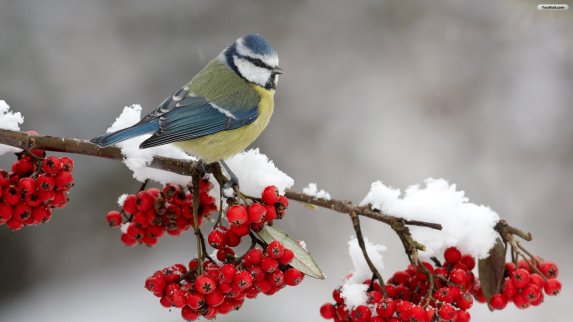 Source: http://gardensupplyco.com/wp-content/uploads/2014/01/winter_bird_wallpaper_d2411.jpg
Source: http://gardensupplyco.com/wp-content/uploads/2014/01/winter_bird_wallpaper_d2411.jpg
Birds are lively and intellectual, imaginative and affectionate creatures, and all their movements are not dictated by mere necessity. They love the hedge and bush where they were born, they return to the same tree, or the same spot under the eave. On the other hand, they like to roam about the fields and woods, and some of them travel long distances during the day. When the pleasurable cares of the nest are concluded, it is possible that they may in some cases cross the sea solely for the solace of change. Variety of food is itself a great pleasure. By prehistoric memory is meant the unconscious influence of ancient habit impressed upon the race in times when the conformation of land and sea and the conditions of life were different. No space is left for a mysterious agency; migration is purely natural, and acts for the general preservation. Try to put yourself in a bird’s place, and you will see that migration is very natural indeed. If at some future period of the world’s history men should acquire the art of flying, there can be no doubt that migration would become the custom, and whole nations would change their localities. Man has, indeed, been always a migratory animal. History is little beyond the record of migrations, how one race moved on and overcame the race in front of it. In ancient days lots were cast as to who should migrate, and those chosen by this conscription left their homes that the rest remaining might have room and food. Checking the attempted migration of the Helvetii was the beginning of Caesar’s exploits. What men do only at intervals birds do frequently, having greater freedom of movement.
Who can doubt that the wild fowl come south because the north is frozen over? The Laplander and the reindeer migrate together; the Tartars migrate all the year through, crossing the steppes in winding and devious but fixed paths, paths settled for each family, and kept without a map, though invisible to strangers. It is only necessary to watch the common sparrow. In spring his merry chirp and his few notes of song are heard on the roof or in the garden; here he spends his time till the broods are reared and the corn is ripe. Immediately he migrates into the fields. By degrees he is joined by those left behind to rear second broods, and at last the stubble is crowded with sparrows, such flocks no one would believe possible unless they had seen them. He has migrated for food, for his food changes with the season, being mainly insects in spring, and grain and seeds in autumn. Something may, I venture to think, in some cases of migration, be fairly attributed to the influence of a desire for change, a desire springing from physiological promptings for the preservation of health. I am personally subject twice a year to the migratory impulse. I feel it in spring and autumn, say about March, when the leaves begin to appear, and again as the corn is carried, and most strongly as the fields are left in stubble. I have felt it every year since boyhood, often so powerfully as to be quite unable to resist it. Go I must, and go I do, somewhere; if I do not I am soon unwell. The general idea of direction is southerly, both spring and autumn; no doubt the reason is because this is a northern country.
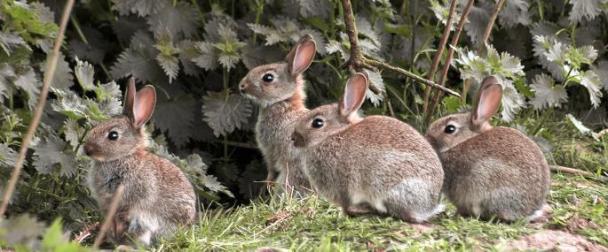 Source: http://data.wildlifetrusts.org/sites/default/files/imagecache/reserve_web_large/sites/data.live.wt.precedenthost.co.uk/files/Rabbit%20Warren%201b%20cpt%20Bob%20Coyle.jpg
Source: http://data.wildlifetrusts.org/sites/default/files/imagecache/reserve_web_large/sites/data.live.wt.precedenthost.co.uk/files/Rabbit%20Warren%201b%20cpt%20Bob%20Coyle.jpg
Some little green stays on the mounds where the rabbits creep and nibble the grasses. Cinquefoil remains green though faded, and wild parsley the freshest looking of all; plantain leaves are found under shelter of brambles, and the dumb nettles, though the old stalks are dead, have living leaves at the ground. Grey-veined ivy trails along, here and there is a frond of hart’s-tongue fern, though withered at the tip, and greenish grey lichen grows on the exposed stumps of trees. These together give a green tint to the mound, which is not so utterly devoid of colour as the season of the year might indicate. Where they fail, brown brake fern fills the spaces between the brambles; and in a moist spot the bunches of rushes are composed half of dry stalks, and half of green. Stems of willow-herb, four feet high, still stand, and tiny long-tailed tits perch sideways on them. Above, on the bank, another species of willow-herb has died down to a short stalk, from which springs a living branch, and at its end is one pink flower. A dandelion is opening on the same sheltered bank; farther on the gorse is sprinkled with golden spots of bloom. A flock of greenfinches starts from the bushes, and their colour shows against the ruddy wands of the osier-bed over which they fly. The path winds round the edge of the wood, where a waggon track goes up the hill; it is deeply grooved at the foot of the hill. These tracks wear deeply into the chalk just where the ascent begins. The chalk adheres to the shoes like mortar, and for some time after one has left it each footstep leaves a white mark on the turf. On the ridge the low trees and bushes have an outline like the flame of a candle in a draught—the wind has blown them till they have grown fixed in that shape. In an oak across the ploughed field a flock of wood-pigeons have settled; on the furrows there are chaffinches, and larks rise and float a few yards farther away. The snow has ceased, and though there is no wind on the surface, the clouds high above have opened somewhat, not sufficient for the sun to shine, but to prolong the already closing afternoon a few minutes. If the sun shines to-morrow morning the lark will soar and sing, though it is January, and the quick note of the chaffinch will be heard as he perches on the little branches projecting from the trunks of trees below the great boughs. Thrushes sing every mild day in December and January, entirely irrespective of the season, also before rain.
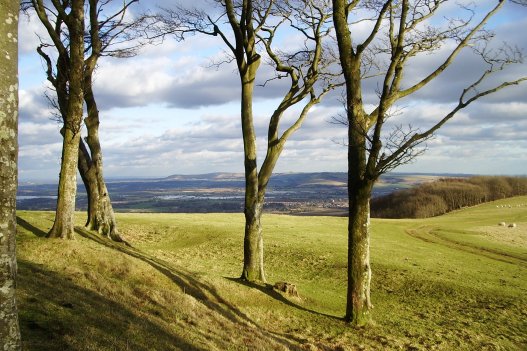
View from Chanctonbury Ring, Sussex. Source: http://www.patadventures.com/wp-content/uploads/SOUTH-DOWNS-Chanctonbury-Ring-looking-east-February-2009-Richard-Reed.jpg
A curious instance of a starling having a young brood at this time of the year, recently recorded, seems to suggest that birds are not really deceived by the passing mildness of a few days, but are obliged to prepare nests, finding themselves in a condition to require them. The cause, in short, is physiological, and not the folly of the bird. This starling had had two previous broods, one in October, and now again in December-January. The starling was not, therefore, deceived by the chance of mild weather; her own bodily condition led her to the nest, and had she been a robin or thrush she would have built one instead of resorting to a cranny. It is certain that individuals among birds and animals do occasionally breed at later periods than is usual for the generality of their species. Exceptionally prolific individuals among birds continue to breed into the winter. They are not egregiously deceived any more than we are by a mild interval; the nesting is caused by their individual temperament.
The daylight has lingered on longer than expected, but now the gloom of the short January evening is settling down fast in the wood. The silent and motionless trees rise out of a mysterious shadow, which fills up the spaces between their trunks. Only above, where their delicate outer branches are shown against the dark sky, is there any separation between them. Somewhere in the deep shadow of the underwood a blackbird calls “ching, ching” before he finally settles himself to roost. In the yew the lesser birds are already quiet, sheltered by the evergreen spray; they have also sought the ivy-grown trunks. “Twit, twit,” sounds high overhead as one or two belated little creatures, scarcely visible, pass quickly for the cover of the furze on the hill. The short January evening is of but a few minutes’ duration; just now it was only dusky, and already the interior of the wood is impenetrable to the glance. There rises a loud though distant clamour of rooks and daws, who have restlessly moved in their roost-trees. Darkness is almost on them, yet they cannot quite settle. The cawing and dawing rises to a pitch, and then declines; the wood is silent, and it is suddenly night.
